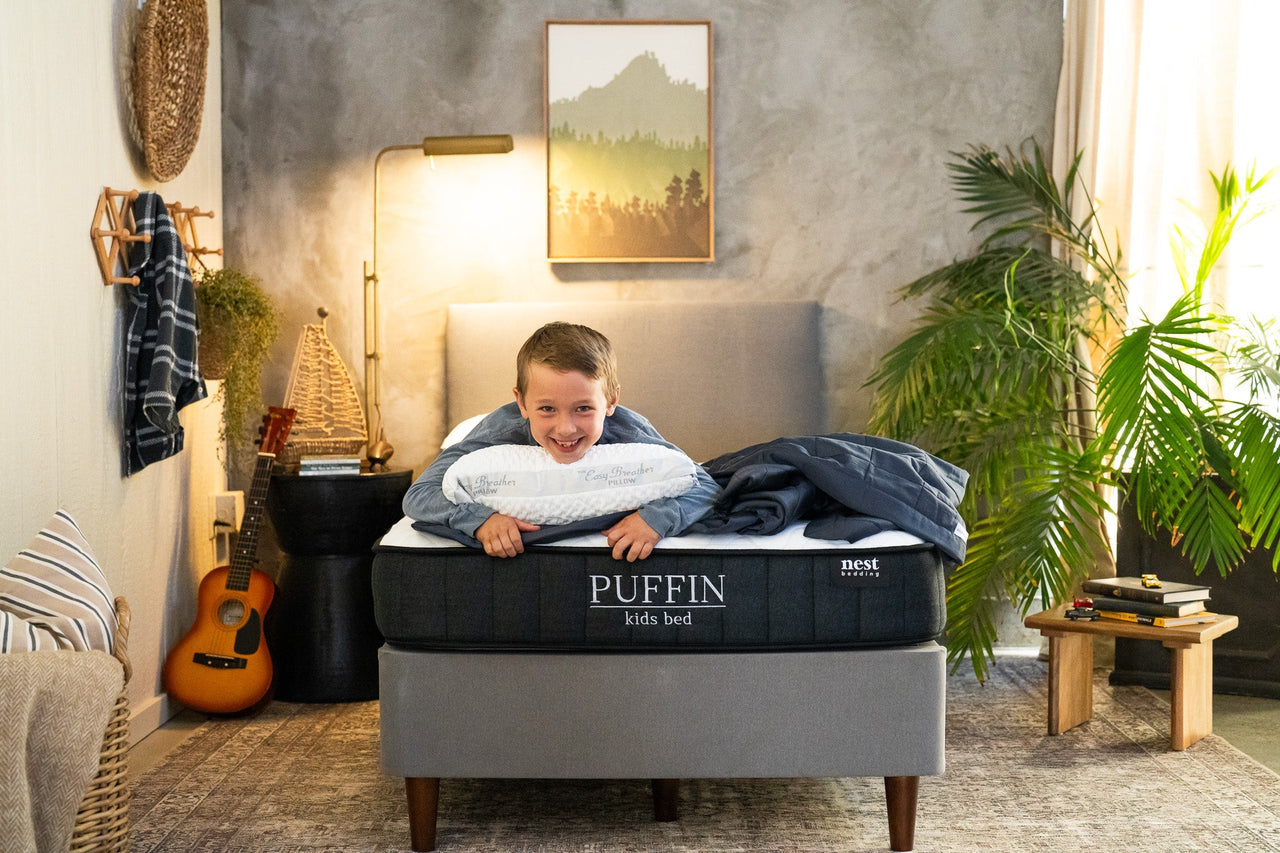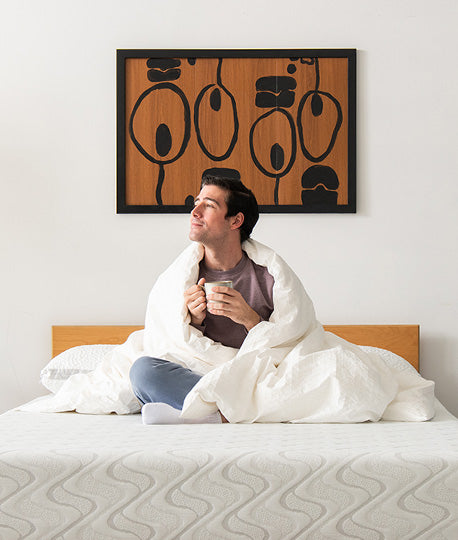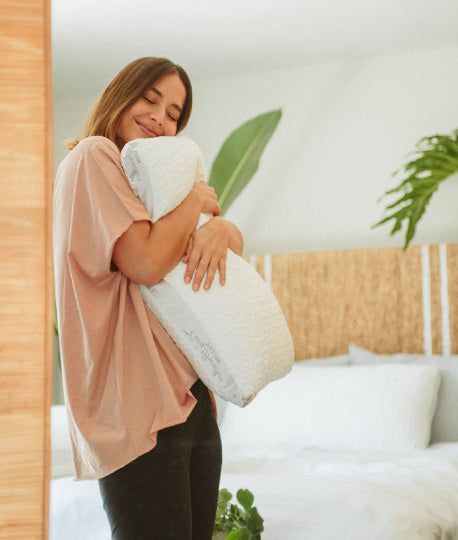How to Create a Sleep-Friendly Bedroom for Kids

Creating the perfect sleep environment for kids directly impacts their rest quality and overall well-being. Parents know that a good night's sleep helps children learn, grow, and regulate their emotions better. Yet many struggle with designing bedrooms that truly support restful sleep. From choosing the right colors to selecting appropriate bedding, multiple factors influence how well a child's bedroom promotes quality rest.
This guide walks through practical steps to transform any child's bedroom into a sleep sanctuary, with special attention to sensory needs and age-appropriate solutions that make bedtime easier for everyone.
Color and Lighting: Setting the Stage for Sleep
The visual environment plays a key role in preparing children for rest. Research shows that color and lighting choices significantly affect sleep quality. Blues, soft greens, and neutral tones work best for promoting relaxation. These colors mirror nature and help lower heart rate and blood pressure, making them ideal for bedroom walls and decor.
Natural light exposure during the day helps regulate children's circadian rhythms. Installing blackout curtains or shades allows control over light levels, especially important during summer months when longer daylight hours can interfere with bedtime. For evening lighting, use warm, dim options that signal to the brain it's time to wind down. Gentle nightlights can provide comfort without disrupting melatonin production.
Consider installing dimmer switches to gradually decrease light levels as bedtime approaches. This mimics a natural sunset and helps trigger the body's sleep response. Some children benefit from wake-up lights that simulate sunrise, making morning transitions smoother.
Creating Comfort with Quality Bedding
The foundation of good sleep starts with the right mattress. Children need proper support as they grow, and our youth mattresses provide carefully engineered comfort layers that adapt to changing bodies. The ideal mattress should be medium-firm, offering enough support to maintain proper spinal alignment while still feeling cozy.
Temperature regulation matters too. Our breathable mattress materials help maintain optimal sleeping temperatures between 65-70°F, which research shows promotes better sleep. We recommend natural fiber bedding like cotton or bamboo that wicks moisture and allows airflow. We also offer breathable crinkle percale organic cotton and TENCEL™ sheet sets just for kids.
Managing Sensory Elements
Children process sensory information differently, and their bedrooms should reflect individual needs. Sound management proves particularly important. White noise machines can mask disruptive household sounds while providing consistent audio that many children find soothing. Position these devices away from the bed, keeping volume at conversation level (around 60 decibels).
Texture choices matter significantly for sensory-sensitive children. Our bedding collections include options ranging from silky smooth to gently textured, allowing parents to select what works best for their child. Consider creating a "cozy corner" with soft pillows and blankets where children can self-regulate when feeling overwhelmed.
Air quality affects sleep quality, too. Using air purifiers removes allergens and creates gentle background noise. Keep rooms well-ventilated and at appropriate humidity levels (30-50%) to support comfortable breathing during sleep.
Organization and Space Planning
A cluttered bedroom can overwhelm children and disrupt their sleep. Create clear zones for sleeping, playing, and storing belongings. Keep the bed area focused solely on rest, with toys and activities placed in separate parts of the room. This physical separation helps kids mentally associate their bed with sleep rather than play.
Low shelves and accessible bins make it easier for children to organize their things. Encouraging them to tidy up before bed helps create a calming nighttime routine and keeps the space feeling peaceful. Clear labels on storage bins ensure everything has a designated place.
Be thoughtful with furniture placement. Position beds away from drafty windows and heating vents, and leave open pathways for nighttime bathroom trips. If space allows, include a small reading nook away from the bed to support quiet, screen-free wind-down time.
Establishing Sleep-Supporting Routines
The bedroom environment should support consistent bedtime routines. Research shows that regular routines help children fall asleep faster and stay asleep longer. Start by dimming the lights 30 to 60 minutes before bed. Adjustable lighting can make this transition feel natural and soothing.
Post a bedtime routine checklist where children can easily see it. Include steps like putting on pajamas, brushing teeth, and picking out clothes for the next day. A visual guide helps children feel more in control while making sure nothing important gets skipped.
Keep electronics out of the bedroom. The American Academy of Pediatrics recommends avoiding screens at least one hour before bed. Replace screen time with calming activities like reading, gentle stretching, or quiet play with non-electronic toys.
Special Considerations for Different Ages
Toddlers often need extra safety features in their sleep space. Bed rails offer security without sacrificing comfort. Floor beds or low-profile frames can also be a good option, allowing for independent access while minimizing the risk of falls.
School-age children benefit from having study areas separate from where they sleep. If a desk must be in the bedroom, use a curtain or screen to visually separate it at night. This helps reinforce the idea that the bed is for rest, not work.
Teenagers have different needs. Their circadian rhythms shift naturally toward later bedtimes. Support this biological change with room-darkening solutions that allow for morning sleep when possible. A cool, quiet environment also promotes deeper, more restorative rest.
Conclusion
Creating a sleep-friendly bedroom for children involves thoughtful consideration of multiple elements, from sensory needs to practical safety features. Focus on establishing a calm, organized environment that supports both relaxation and quality sleep. Start with a supportive mattress from our collection, add appropriate bedding and lighting, then fine-tune the space to match your child's specific needs. Remember that sleep environments may need adjusting as children grow and their needs change.
Be sure to explore our full range of sleep solutions designed specifically for children's bedrooms, or contact our sleep specialists for personalized recommendations based on your child's unique requirements.




